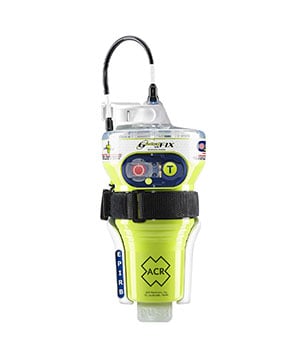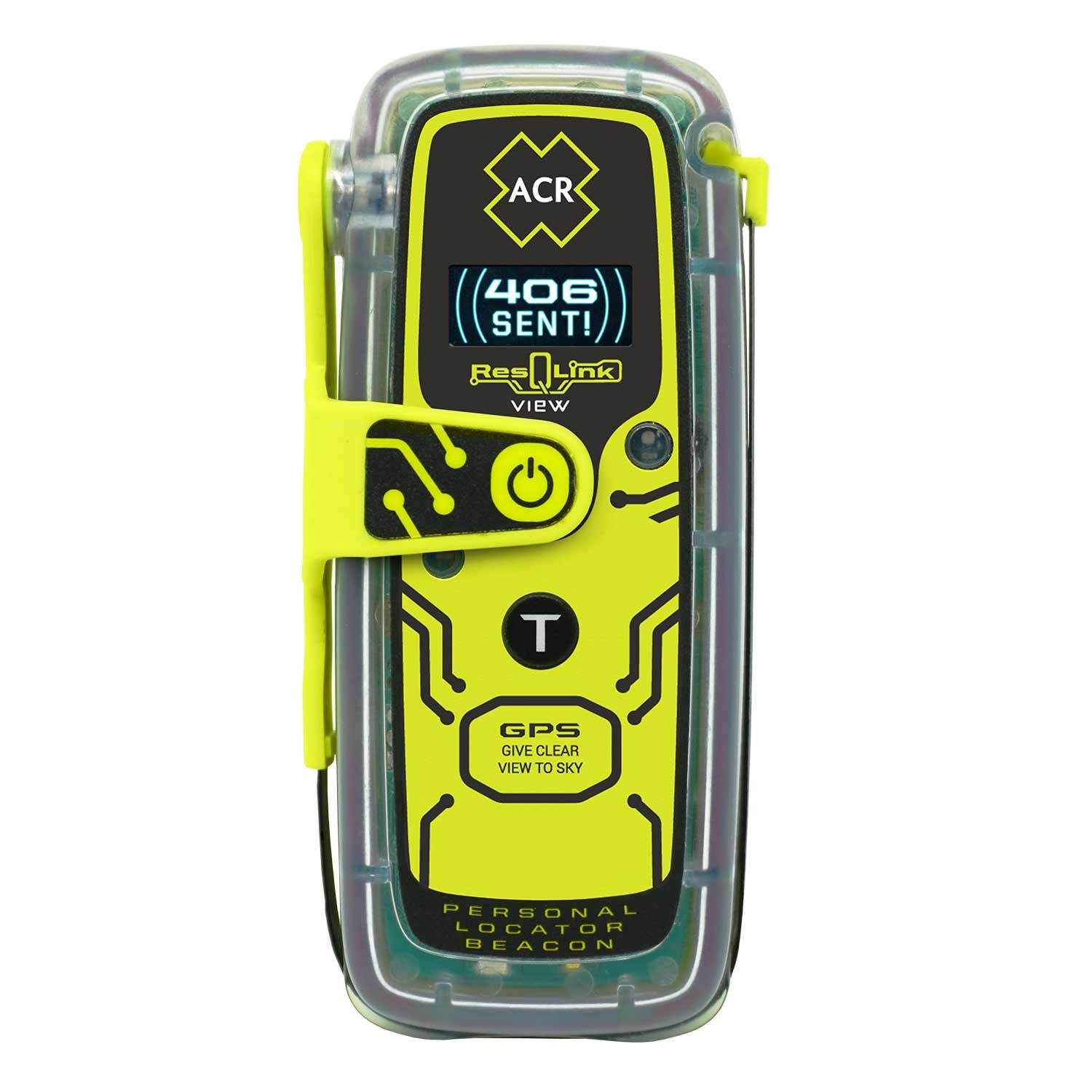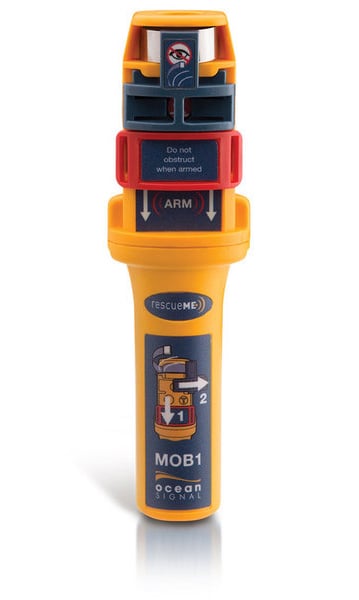EPIRBs (Emergency Position Indicator Radio Beacons) and PLBs (Personal Locator Beacons) provide life insurance that we hope you'll never need to use. No matter where you are in the world, in the event of a life-threatening situation, either of these devices can save your life or that of your crew.
- How EPIRBs and PLBs Work
- Differences Between EPIRBs and PLBs
- Category I vs Category II EPIRBs
- Built-In Display
- Other Features to Consider
- Personal AIS Beacons—PABs
How EPIRBs and PLBs Work
EPIRBs and PLBs are radio transmitters. When activated in an emergency, they broadcast a 406 MHz signal via satellite to the Cospas-Sarsat global emergency network. Before the introduction of models that include GPS, your position was triangulated to within about two nautical miles and relayed to SAR (Search and Rescue) responders. The notification process could take up to about one hour. After arrival at your general location, SAR personnel then followed a 121.5 MHz homing beacon that lead them your exact location.

ACR's GlobalFix™ V4 EPIRB includes an internal GPS receiver.
EPIRBs and PLBs are now offered with a built-in GPS. In an emergency, these models can alert the SAR agency nearest to you of your emergency and your position in as little as two to three minutes. Position accuracy is to within 100 yards—an improvement over the 2nm range offered by previous EPIRB technology. For these reasons we recommend that when shopping for an EPIRB or PLB that you purchase one with an internal GPS.
How EPIRBs Differ from PLBs
Unlike relatively small PLBs which are designed for use by individual crewmembers, larger EPIRBs are meant to be installed on or otherwise kept onboard a boat. EPIRBs require registration to a government database. Registration includes providing important information such as the boat’s name, boat type, safety equipment onboard and emergency contact information. When an EPIRB transmits, rescuers can quickly identify the boat and can phone emergency contacts to verify its itinerary. EPIRBs are intended strictly for marine use and have around a 48 hour battery life once activated.

ACR's ResQLink View Personal Locator Beacon includes an integrated status display.
Category I and Category II EPIRBs
EPIRBs fall into one of two categories based on whether they are designed for automatic or manual activation. Category I EPIRBs are designed to automatically release from their bracket and activate their emergency signal when submerged between 3'–14'. Category II EPIRBs require manual activation and if installed in a fixed location onboard must be manually removed from their bracket. Both types include a built-in strobe light and are designed to float.
How PLBs Differ from EPIRBS
While EPIRBs are for boats, PLBs are for personal use. PLBs are smaller than EPIRBs and when activated have a shorter battery life. Like EPIRBs, they operate on the 406 MHz and 121.5 MHz frequencies and provide the same worldwide coverage. They also require registration to a government database; but rather than being registered to a boat, they are registered to a person, which gives you the ability to take your EPIRB from boat to boat or wherever you wish. Unlike EPIRBs, in addition to marine use, they can legally be used on land by hikers, climbers, hunters, and other adventurers. Many PLBs have a built-in strobe light, but this is not required as with EPIRBs. They are also not required to float. Once activated, PLBs such as the ResQLink 400 and the ResQLink View by ACR Electronics, have a 28 hour battery life, which is less than the 48 hours of EPIRBs. Having a PLB is great insurance while exploring away from the mother ship in your dinghy and they are a less-bulky EPIRB alternative for any small boat.

Ocean Signal's RescueME MOB1 is a PAB (Personal AIS Beacon) that uses the AIS system and VHF radios with modern Digital Selective Calling.
Do you want a beacon that has a built-in display?
Certain rescue beacons include a built-in digital display that gives useful information, including self-test results, remaining battery power, operating instructions, transmission bursts and your LAT/LON position. The ResQ Link View PLB by ACR Electronics is an example of a beacon with this feature.
Other Features to Consider
As mentioned above, while EPIRBs are required to float and to include a strobe light, PLBs surprisingly are not. Examples of PLBs that do include these features are the ResQLink 400 Personal Locator Beacon and the ResQ Link View PLB by ACR Electronics. In addition to their buoyant design, both feature built-in conventional and infrared strobes for enhanced visibility to SAR personel at night or in low-visibility conditions.
Personal AIS Beacons—PABs
While EPIRBs and PLBs give you the ability call for rescue via the Cospas-Sarsat emergency network from anywhere in the world, they fall short in crew overboard situations where an immediate response is required. This is why in addition to having an EPIRB or a PLB you should also consider having a PAB (Personal AIS Beacon). These devices are intended to be attached to your life vest and activated if you go overboard. They use both GPS and AIS (Automatic Identification System) technology to send structured alert messages containing your precise location to any AIS receiver onboard your vessel and to other AIS-equipped boats or ships that happen to be within a typical four-mile radius. In a crew overboard situation, chances of finding and recovering the victim are greatly increased, thanks to information given by the PAB, which shows bearing and distance to the person in the water.